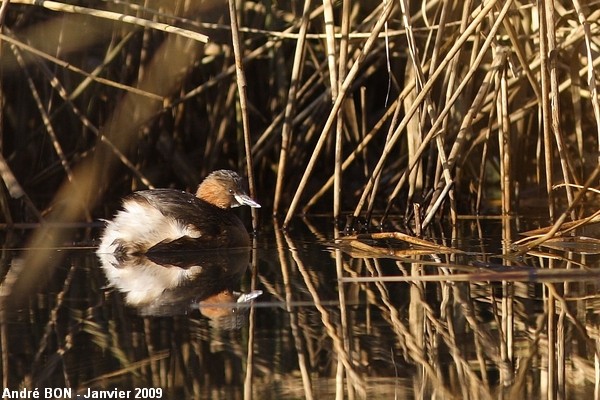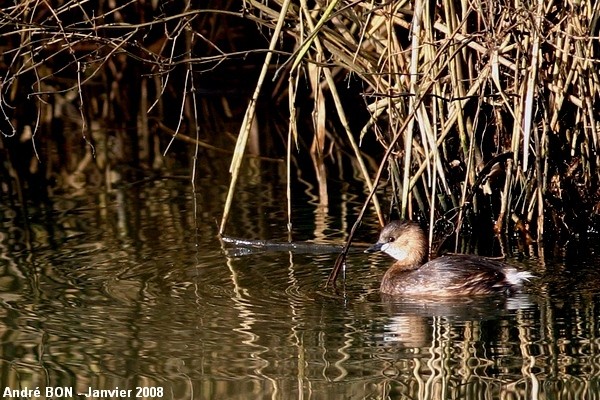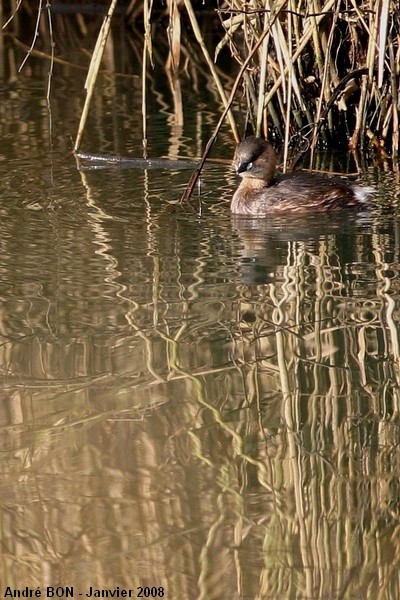


| Little Grebe (Tachybaptus ruficollis (Pallas, 1764)) |



|
|
Scientific name: Tachybaptus ruficollis (Pallas, 1764) Common name: Little Grebe French name: Grèbe castagneux Order: Podicipediformes Family: Podicipedidae Size: Body size: 25 to 29 cm; Wingspan: 40 to 45 cm; weight: 100 to 200 g. Habitat: Still or slow running water with dense emerging vegetation. The Little Grebe can live on small size ponds or ditches. Food: Larvae, water insects, molluscs, crustaceans, small fishes, caught by diving under water. Nesting: The nest is a reed platform floating and attached to the vegetation or laying on the underwater ground. Females lay 5 to 6 eggs between April and July. Migration: Sedentary. Birds from northern Europe move southwards in winter. Geographic area: Europe except extreme north, southern Asia, all Africa except desert areas. |
The Little Grebe, as mentioned by its common name, is the smallest bird of the Grebe family. It looks like a float with the ruffled tuft made by the tail's feathers. The plumage is a, almost black, dark brown colour. The sides of the body are sometimes a paler brown colour and the rump is whitish brown. Males, in breeding-plumage, show a rich russet colour on the neck and the cheeks. The narrow and sharp bill is black and white-tipped. There is a comma-shaped yellow mark at the base of the bill. The greenish legs are very far back on the body like on other grebes. The Little Grebe song is a repeated trill. It is rather pleasant to hear. |
| [To know more about the Little Grebe] [Next picture] [Top] |

|
I have shot this picture from the pond's bank. This is an important crop. The best way to take pictures of Little Grebes remains a floating hide. I need to use one in the future. |
| [To know more about the Little Grebe] [Next picture] [Previous picture] [Top] |

|
I have only observed Little Grebes in winter on these ponds. These are very shy birds. Their easy to recognized song is the first indicator of their presence. With some patience, near the reed bed, it is possible to shoot some pictures if you are quick enough between two dives. |
| [To know more about the Little Grebe] [Previous picture] [Top] |

|
I have hoped, in vain, a brood of Little Grebes. They left the reed bed since early spring. Did they fly back to northern Europe? |